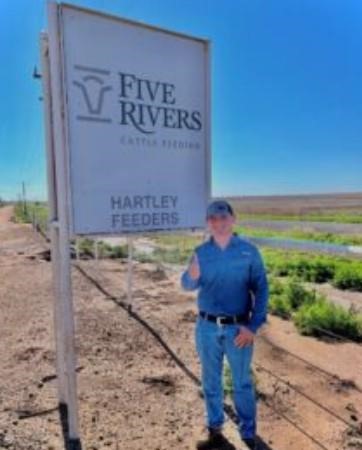Mother Nature must have a love-hate relationship with us. But now that “Second Winter” has finally passed, we can focus on getting cow-calf pairs out of the mud and onto pasture. Even though the snow and rain have provided us with moisture, drought conditions may still linger in parts of the state. As of May 5, 2022, North Dakota still has roughly 36% of the state in some form of long-term drought (https://droughtmonitor.unl.edu/). The combination of drought and late spring warm-up may have many producers contemplating early weaning of their 2022 calf crop.

As of May 5, 2022, North Dakota still has roughly 36% of the state in some form of long-term drought
Due to periods of drought, poor grass quality or quantity, and expensive feed costs, early weaning becomes a more practical tool to help meet nutritional requirements of the dam. Spring born calves tend to consume significant amounts of range forages at 45 days of age and as a “last resort” can be weaned at that time. Weaning this early would encourage thin cattle (body condition score of 3) to cycle and rebreed by eliminating the suckling stimuli. Weaning at 45-60 days of age can be a management strategy during certain droughts. A more common early weaning strategy is at 3-5 months of age. This strategy does not improve reproduction percentage but does improve cow body condition for winter and the following calving season.
Weaning calves will reduce nutrient requirements for the cow. There is difference of roughly 4-6 pounds of daily dry matter (DM) intake between lactating and nonlactating cows. For example, a nonlactating 1200-pound cow will consume 24 pounds of DM daily, while a lactating 1200-pound cow will consume 30 pounds of DM daily. Additionally, a 300-pound calf will consume roughly 5-6 pounds of forage DM per day. Therefore, every 2.5 days that a calf is weaned could extend the pasture grazing season by one additional day.
Calves adapt quickly to changes in diet and environment if the management plan is carefully developed. Starting calves on dry feed immediately after separation can reduce sickness and death. Nursing calves gain typically 2.1-2.3 pounds daily and early weaned calves should be managed similarly. Initial post-weaning diets need to meet all nutritional needs at a DM intake of 1-1.5% of body weight while providing roughly 65-75% total digestible nutrients and 14-16% crude protein. After two weeks of separation, calves should eat approximately 2.5% of the body weight per day. Limit the use of low-quality forages and feeds.
Feed intake and behavior are indicators of calf health. Feed management should be monitored closely to help identify issues. Uneaten feeds should be removed from the bunk rather than left to be cleaned up (i.e. “I am going to let them clean their bunks today”) and uneven feeding (i.e. fed twice some days but only once on other days) should be minimized. Consult your veterinarian to develop an adequate herd health and vaccination program.
Source : ndsu.edu